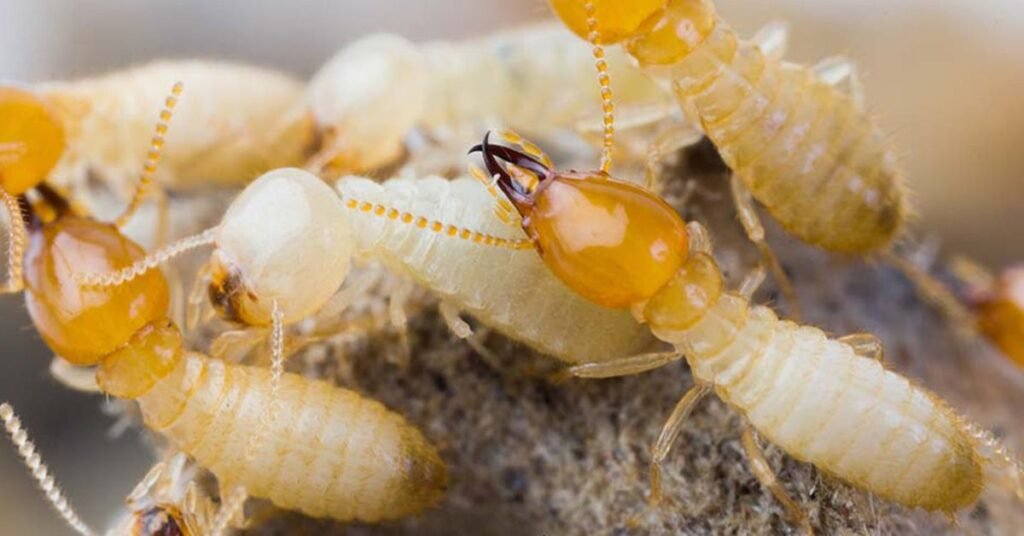Baby termites, often referred to as nymphs, are tiny and translucent, which resemble miniature termites that look like adult ones. What do baby termite look like? The tiny creatures typically appear lighter in color, usually white or cream-colored having soft bodies but no wings. When they get bigger, the baby termites pass through a number of stages of molting. They eventually develop into soldiers, workers or even reproductive adults based upon their position in the colony. Nymphs generally remain hidden within the nest, consuming the cellulose-based substances. Though they are difficult to detect however, they are usually the sign of a thriving and increasing termite problem within your house.
From Eggs to Larvae: How to Spot Baby Termites in Your Home

In this piece we’ll examine the appearance of baby termites and the excellent way to spot the signs. Being able to recognize the baby termites is crucial for being able to detect an outbreak early. The following article will discuss the different stages of the termite’s growth from egg to larvae. In addition, we’ll provide strategies to identify the signs of termites within the home.
Key Takeaways
- The termite larva, also known as baby termites or larvae, is termites in their immature stages which hatch out of eggs laid by queens.
- It is crucial for homeowners as well as property managers all over the United States to know the symptoms of an infestation brought on by termites.
- Little termites are fluffy, and white featuring distinct characteristics such as the rounded head, and the six legs.
- The different phases of termite development beginning with eggs, and progressing to larvae, will help you detect the indicators of an infestation.
- Paying close attention to the droplets of termites as well as the appearance of winged termites could assist in identifying an infestation of termites in the early stages.
Understanding Termite Life Stages: What Do Termite Droppings Look Like?
Termites live a complicated cycle, with multiple stages. Knowing these stages helps us understand these pests better. It also helps us tackle any infestations more effectively.
Egg Stage
Termite eggs are tiny, white, and oval-shaped, about 1 to 2 millimeters long. The queen termite lays these eggs deep in the nest or colony. After a few weeks, the eggs hatch, starting the next generation of termites.
Larval Stage
The termites that have just hatched known as larvae are fluffy and white. They are helpless and need the care of worker termites for food. When they get bigger and develop, they undergo multiple molts and eventually become adult termites.
As they mature, larvae become different types of termites, like workers, soldiers, or reproductive ones. Knowing about termite development helps us spot what do termite droppings look like in our homes or properties.
| Stage | Characteristics | Duration |
| Egg | White, oval-shaped, 1-2 mm in length | 2-3 weeks |
| Larva | Soft-bodied, white in color | Varies, depending on caste development |
What Do House Termites Look Like? Recognizing Essential Characteristics for Homeowners

House termites, commonly known as drywood or subterranean termites, exhibit distinct physical characteristics that help identify them. These pests typically range from 1/4 inch to 1/2 inch in length, with a soft, elongated body. Their colors range between creamy white and light brown, based on species. Unlike ants, termites have straight antennae, and their wings are equal in size and shape. Worker termites, which are responsible for foraging and colony maintenance, are wingless and pale. In contrast, reproductive termites, or swarmers, have wings and are darker in color. Understanding what do house termites look like is essential for homeowners to identify infestations early and take preventive measures.
Key Points
- House termites range from 1/4 inch to 1/2 inch in length.
- The color ranges from a cream white to mild brown.
- Straight antennae distinguish termites from ants.
- Wingless workers and dark, winged swarmers have different roles.
- Early identification is crucial for effective pest control.
Signs of a Termite Infestation: What Do Flying Termites Look Like
Flying termites that are frequently mistaken for flying ants, can be the most reliable indicator of a termite problem. The termites reproduce or”swarmers” typically have two wings. “What Do Termites Look Like?” They are of the same dimension bigger than their bodies. Their wings measure approximately 1/2 inch long.
“What do baby termites look like“Their bodies are usually dark brown or black, and they possess straight antennae. When observing a swarm, it’s crucial to ask yourself, What do flying termites look like? Early detection of pests will help prevent major destruction to your house. Look for discarded wings, as swarmers often shed them after mating, which is another sign of their presence.
FAQ
What do termite droppings look like?
Termite droppings, or frass, are small, brown pellets. They are found near where termites enter or along walls and floors.
What do flying termites look like?
Flying termites, or alates, have two pairs of wings that are the same size. They are dark brown or black and straight-bodied. You’ll see them swarming around lights or near termite colonies.
What do house termites look like?
House termites are pale, ranging from white to light brown. They have soft bodies and six legs. Their heads are a bit larger than their bodies. They live in wooden parts of homes, causing damage if not treated.
What are the different stages of termite development?
Termites go through several stages: eggs, larvae (nymphs), and adults. Eggs are small, white, and oval. Larvae are soft and pale. As they grow, they become winged adults or workers and soldiers, each with unique features.
How can I identify a termite infestation early on?
Spotting a termite infestation early is key. Look for termite droppings, mud tubes, and swarming alates. Also, check for wood damage or hollow sounds in your home to catch an infestation early.

